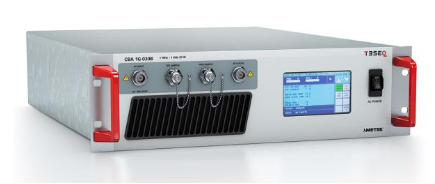What is the main process technology of RF power amplifier?
The two most power-hungry parts of cell phone design are the baseband processor and RF front end. The power amplifier (PA) consumes most of the power in the RF front end. The key to achieving low power consumption is to make other circuits in the RF front end consume as little power as possible without affecting the operation of the PA.
In the current selection, the GaAs switch with decoder absorbs 600μA, but in a typical RF front-end application, the UltraCMOS SP7T switch only sinks 10μA, which can significantly reduce the power consumption of the RF front-end. The efficiency of the RF power amplifier.
Companies that manufacture RF power amplifiers using CMOS processes include Infineon, Freescale, Silicon Labs, Peregrine, and Jazz Semiconductor.
Low power consumption and high efficiency of power amplifiers with InGaP process
Many advantages of InGaP HBT (heterojunction bipolar transistor) technology make it ideal for high frequency applications. InGaP HBTs are made of GaAs, which is the most commonly used underlayer material for RF ICs in the RF field.
The reasons are: 1. The electron mobility of GaAs is about 6 times higher than that of silicon as a CMOS substrate material; 2. The GaAs substrate is semi-insulating, while the substrate in CMOS is conductive. The higher the live mobility, the higher the operating frequency of the device.

A semi-insulating GaAs substrate allows for better signal isolation on the IC and uses less passive components. This advantage cannot be achieved if the substrate is conductive. In CMOS, due to the high conductivity of the substrate, it is difficult to construct functional microwave circuit components such as high Q inductors and low loss conductive lines. Although these difficulties can be overcome to some extent, they must be achieved by using various non-standard processes in IC assembly, which will increase the manufacturing cost of CMOS devices.
nGaP is especially suitable for high frequency applications that require a fairly high power output. Improvements in the InGaP process have resulted in higher yields and a higher level of integration, allowing the chip to integrate more functions. This simplifies system design, reduces raw material costs, and saves board space. Some InGaP PAs also use a multi-chip package that includes CMOS control circuitry. Today, the front-end WLAN module with integrated PA and low noise amplifier (LNA) at the receiving end combined with RF switches is available in a compact package. For example, the InGaP-Plus process proposed by ANADIGICS can integrate bipolar transistors and field effect transistors on the same InGaP chip. This technology is being used in new CDMA and WCDMA power amplifiers with improved size and PAE (power increase efficiency).
Comparison of RF CMOS PA and GaAs PA
Currently, most mobile phone PAs use GaAs and InGaP HBT technology, and only a small part is manufactured using RF CMOS technology. Compared to GaAs devices, RF CMOS technology enables higher levels of integration and lower cost.
However, it is not ideal for all consumer electronics products. For example, the wireless network and mobile phone market are dominated by GaAs PA because it can support high frequency and high power applications and is highly efficient. On the other hand, RF CMOS PA dominates Bluetooth and ZigBee applications because it typically runs at lower power and performance requirements are less demanding.
If you want to know more, our website has product specifications for RF power amplifier, you can go to ALLICDATA ELECTRONICS LIMITED to get more information

